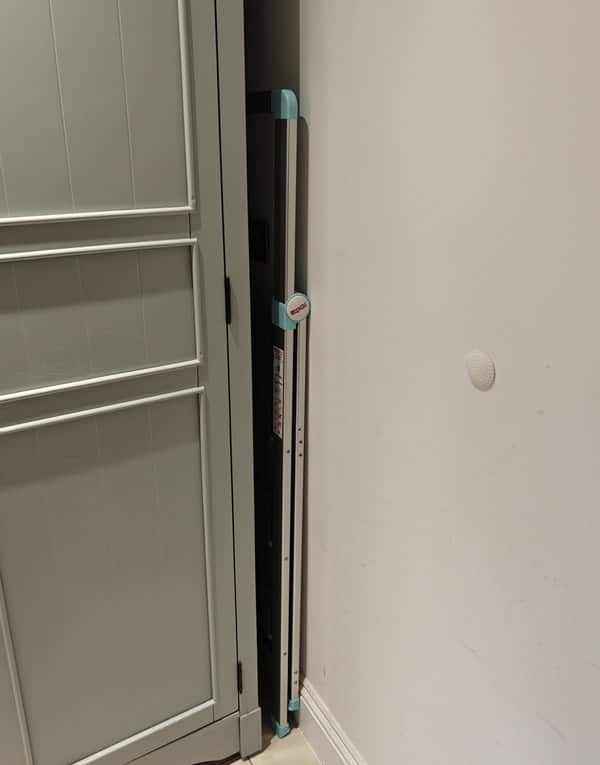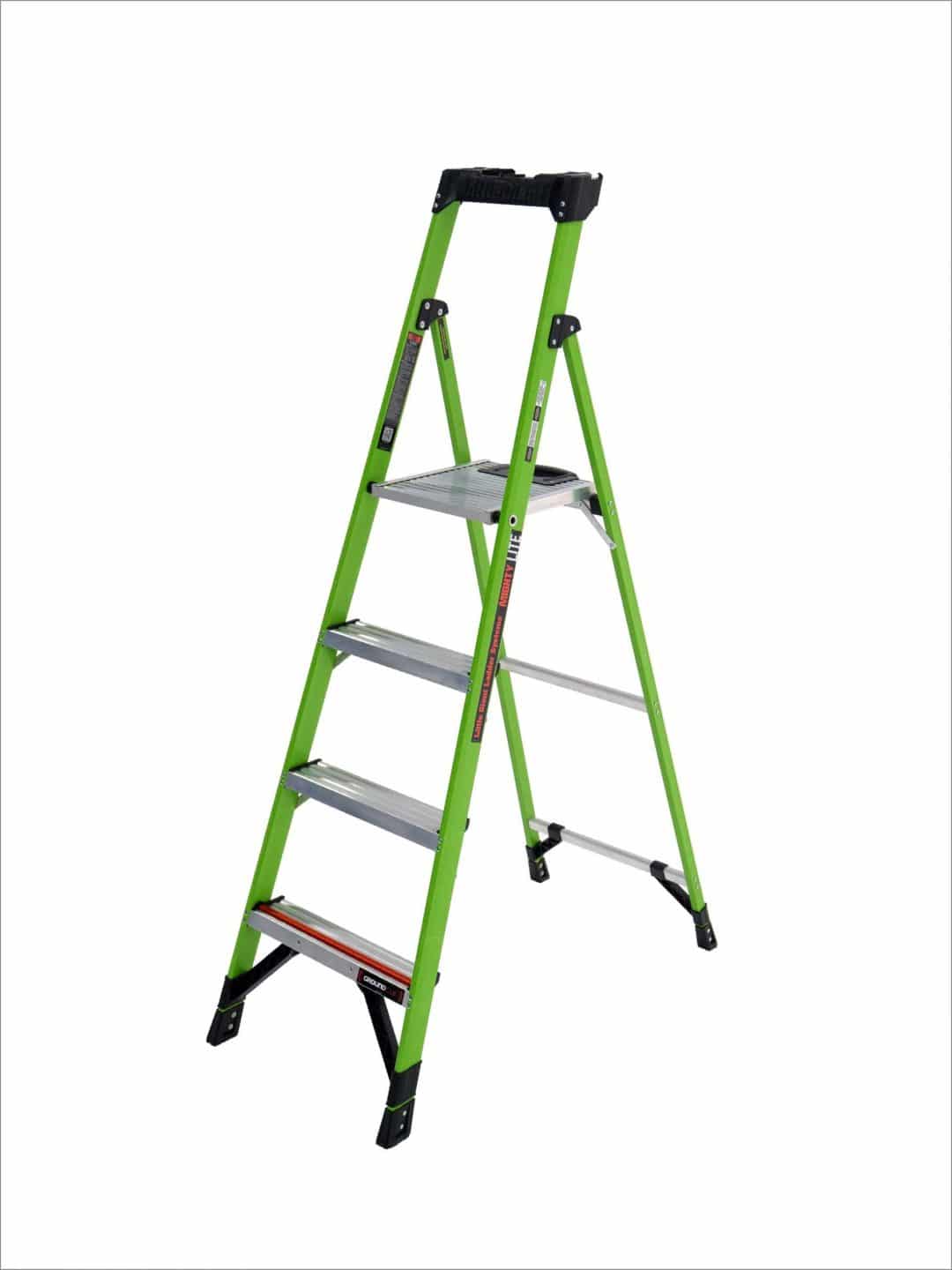No products in the basket.
Blog
Common Ladder Mistakes to Avoid (With Expert Safety Guidance)


Ladders are indispensable tools—commonly used in homes, on building sites, and across workplaces throughout the UK. While they may seem simple to use, improper handling can lead to serious injuries or even fatalities. According to the Health and Safety Executive (HSE), ladder-related incidents remain one of the leading causes of workplace falls.
Health and safety law recognises ladders as a practical and sensible option for low-risk, short-duration tasks—but they should not be your automatic first choice. A risk assessment should always be performed to decide if a ladder is appropriate for the job.
Whether you’re a DIY enthusiast or a professional tradesperson, avoiding common ladder mistakes—and understanding when and how to use a ladder—can significantly reduce the risk of injury.
✅ Before You Begin: Ladder Safety Fundamentals
Before using a ladder, ensure the following:
- 📋 Risk Assessment: Only use ladders for low-risk tasks that last no more than 30 minutes and can be performed in a safe environment.
- 🧠 Competence: You should have training, experience, and knowledge in ladder safety—or be supervised by someone who is competent.
- 📜 User Instructions: Refer to the manufacturer’s instructions, often printed on the ladder itself.
🔍 Pre-Use Inspection Checklist
Always inspect your ladder before use, especially when moving it between work areas or after it’s been dropped:
- 🪜 Rungs/steps: Look for wear, looseness, bending, or slippery surfaces.
- 👣 Feet: Ensure they’re intact and touch the ground securely. Remove debris like stones or leaves.
- 📏 Stiles (side rails): Check for bending or damage.
- 🛠️ Platform (on stepladders): Check for damage or anything that might cause slipping.
- 🔒 Locking mechanisms: Confirm they function properly and are fully engaged.
⚠️ Do not use the ladder if any damage is found.
Common Ladder Mistakes and How to Avoid Them
1️⃣ Choosing the Wrong Type of Ladder
Mistakes:
- 🚫 Using a step ladder instead of an extension ladder
- 📉 Using a ladder that’s too short
- 🏋️ Using lightweight ladders for heavy-duty tasks
Solutions:
- 📏 Ladder should extend 1 metre above your working height
- 🪜 Choose the right type:
- 🏠 Step ladders: indoor or stable surfaces
- 🏗️ Extension ladders: roofs/high areas
- 🛠️ Platform ladders: long tasks/tool use
- 💪 Use Class 1 or EN131 Professional Ladders for heavy loads
2️⃣ Incorrect Ladder Setup
Mistakes:
- ⚠️ Placing ladders on uneven/slippery surfaces
- 🔓 Failing to lock spreaders
- 📐 Incorrect angles
- 🏗️ Not securing the ladder
Solutions:
- 📐 Follow the 4-to-1 rule
- 🔒 Lock all hinges and spreaders
- ⚖️ Use levellers or anti-slip mats
- 🧷 Tie off or stabilise the ladder securely
3️⃣ Overreaching or Leaning Too Far
Mistakes:
- 🙅 Leaning outside ladder rails
- ☠️ Standing on top rungs
- 🛠️ Holding tools while reaching
Solutions:
- 🧍 Keep your belt buckle between the rails
- ⛔ Don’t stand on the top two rungs (top three for extension ladders)
- 🧰 Use tool belts or reposition ladder as needed


4️⃣ Ignoring Load Capacity
Mistakes:
- 🏋️ Exceeding weight limits
- 🛠️ Forgetting to include tools/materials
Solutions:
- 🏷️ Check duty ratings (e.g., Type I, IA, EN131)
- ⚖️ Total weight = Your weight + tools
- 🏗️ Use industrial-grade ladders for heavy work
5️⃣ Unsafe Climbing Habits
Mistakes:
- 🏃 Rushing or skipping rungs
- ↩️ Climbing backward
- 🎒 Carrying items
Solutions:
- 🤲 Always keep three points of contact
- 🧗 Face the ladder at all times
- 🪣 Use pulleys or tool belts—never carry tools in hand


6️⃣ Using a Damaged or Worn-Out Ladder
Mistakes:
- ⚠️ Ignoring visible damage
- 👣 Using ladders with missing feet
- 💥 Using ladders after being dropped
Solutions:
- 🔍 Inspect before every use
- 🚫 Remove and tag damaged ladders
- 🛠️ Maintain according to manufacturer guidance


7️⃣ Ignoring Weather and Environmental Hazards
Mistakes:
- ⚡ Using metal ladders near electrical sources
- 🌧️ Working in wet, icy, or windy conditions
Solutions:
- 🪜 Use fibreglass ladders near electricity
- 🧽 Dry ladder rungs and feet before use
- ⏳ Delay jobs in poor weather


8️⃣ Storing Ladders Improperly
Mistakes:
- ☀️ Leaving ladders exposed to elements
- 📦 Stacking items on ladders
- 🔥 UV and heat exposure
Solutions:
- 🏠 Store in a cool, dry place
- 🪜 Hang horizontally or secure upright
- 🧼 Clean and inspect regularly
9️⃣ Carrying Tools While Climbing
Mistakes:
- 🛠️ Carrying tools in hand
Solutions:
- 🧰 Use tool belts, pouches, or lanyards
- 🔄 Raise tools using a pulley/rope system
- ✋ Always climb with both hands free from carrying anything, so you can grip the ladder securely


🔟 Working Alone on High-Risk Tasks
Mistakes:
- 👤 Performing high-risk jobs solo
- 🆘 No one nearby to help in emergencies
Solutions:
- 📣 Inform someone of your location
- 👀 Have a colleague or spotter present
- 🏗️ Use scaffold tower for repeated/high jobs
🚫 Ladder Safety Do’s and Don’ts (Summary)
✅ Do:
- 📏 Ensure ladder is high enough
- 🔒 Engage all locking mechanisms
- 🏗️ Place on stable, clean ground
- 🤲 Maintain 3-point contact
- 🛡️ Secure from the public/environment
❌ Don’t:
- ⚠️ Overload or overreach
- 🚶 Move the ladder while on it
- ⛔ Use the top three steps/rungs
- 🪜 Use stepladders for access to another level
- ⚡ Rest ladders on weak surfaces or near power lines
✅ Final Thoughts: Climb Smart, Stay Safe
Ladder safety isn’t just common sense—it’s about knowledge, preparation, and behaviour. By following legal guidance, checking your equipment, and avoiding these critical mistakes, you reduce your risk of falls and improve your efficiency on the job.
🏁 Top Tip: If in doubt, don’t go up—reassess your equipment or call in help.
Further reading:
Explore more ladder safety at HSE Ladder Safety Guidelines.
Tower Safety Markings Explained.







